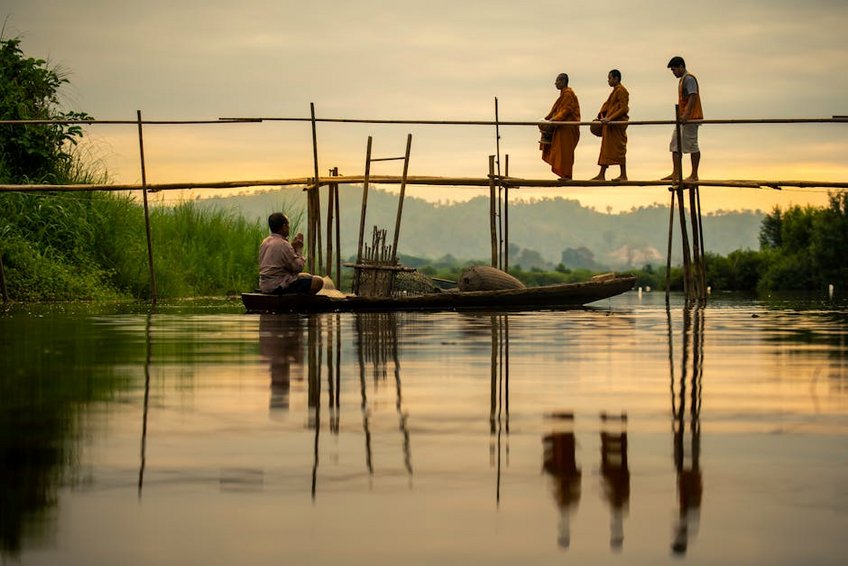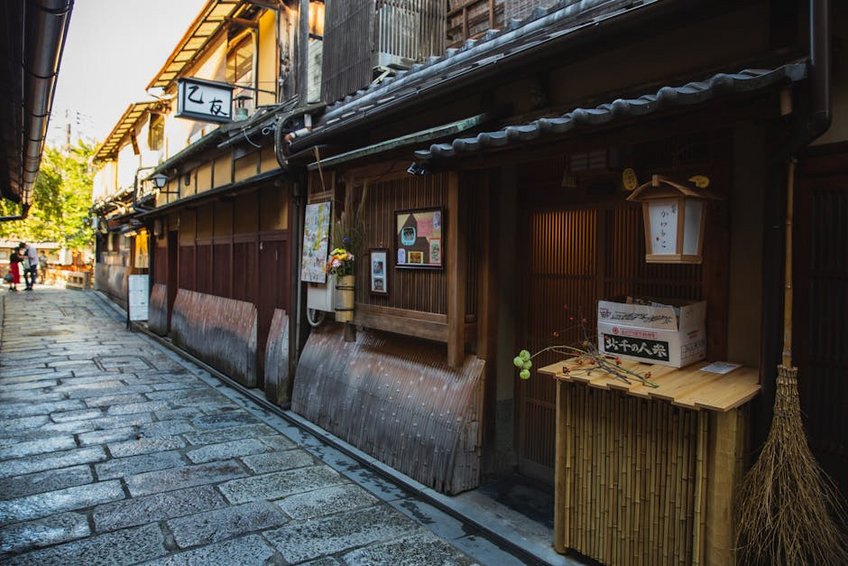Morning Rituals with Monks in Kyoto
Experiencing morning rituals with monks in Kyoto offers a profound glimpse into Japanese spiritual life that few travelers ever witness. This unique opportunity allows you to participate in ancient Buddhist traditions that have been preserved for centuries in temples throughout Japan’s cultural capital. As you sit in meditation alongside practicing monks, you’ll hear the resonant chanting that begins before sunrise, feel the tranquility of temple grounds awakening, and perhaps even share in a simple vegetarian breakfast known as shojin ryori. The morning rituals with monks in Kyoto provide not just a tourist activity but a genuine cultural immersion that can transform your understanding of Japanese spirituality. Whether you’re seeking mindfulness, cultural insight, or simply an unforgettable travel experience, this practice connects you to Kyoto’s living heritage in the most authentic way possible.
Morning Rituals with Monks in Kyoto – Essential Information
Participating in morning rituals with monks requires understanding the cultural significance and practical requirements. These ceremonies, known as ‘choka’ or morning service, typically begin between 5:30 and 6:30 AM depending on the season and temple. Most temples that welcome visitors maintain Zen Buddhist traditions, though some may follow other schools like Tendai or Shingon Buddhism. The experience usually lasts 1-2 hours and may include seated meditation (zazen), sutra chanting, ceremonial bowing, and sometimes a simple vegetarian meal. You’ll need to reserve weeks or even months in advance for popular temples, while others may accept same-day participation if space permits. Remember that this is not a performance but actual religious practice – participants are expected to observe proper etiquette and maintain respectful silence throughout.
What You Need to Know Before Participating
- Reservations are mandatory at most temples and should be made weeks in advance, especially during peak seasons (spring and autumn)
- Dress modestly in dark, comfortable clothing that covers shoulders and knees – many temples provide rental robes if needed
- Remove shoes before entering temple buildings and follow specific instructions about seating arrangements and protocol
- Basic participation (meditation only): $30-50 USD per person
- Standard experience (meditation + chanting): $50-75 USD per person
- Comprehensive package (rituals + breakfast + guided explanation): $75-100 USD per person
- Japan National Tourism Organization – Temple Stay Programs
- Kyoto Tourism Foundation Official Site
Key Cultural and Spiritual Significance
These morning rituals represent centuries of uninterrupted Buddhist practice in Japan. The chanting of sutras (Buddhist scriptures) is considered a form of meditation and offering, not merely recitation. The rhythmic quality and specific pronunciations have been preserved through oral tradition dating back to the 6th century when Buddhism first arrived in Japan. The rituals you’ll witness are essentially identical to those performed when these temples were first established – some dating back over 1,200 years. This continuity creates a powerful connection to Japan’s spiritual history that few cultural experiences can match.

Morning Rituals with Monks in Kyoto – Planning Your Trip
Planning your participation in morning rituals with monks requires careful consideration of timing, temple selection, and preparation. Kyoto’s temples offer these experiences year-round, but each season brings different atmospheric qualities – spring mornings feature cherry blossoms, autumn offers brilliant foliage, winter provides crisp air and sometimes snow, while summer brings lush greenery despite higher humidity. You’ll want to choose temples based on your interests: some focus more on meditation, others on elaborate chanting ceremonies, and some include breakfast or tea ceremony elements. Budget between $30-100 USD per person depending on the temple and included amenities. Remember that photography is often prohibited during actual rituals, so prepare to experience rather than document these moments.
Best Time to Visit Kyoto for Monk Rituals
The ideal time for morning rituals with monks depends on your preferences. Spring (March-May) offers pleasant temperatures and beautiful cherry blossoms but larger crowds. Autumn (September-November) provides stunning foliage and comfortable weather. Winter (December-February) means smaller groups and magical atmosphere but very early, cold mornings. Summer (June-August) has fewer visitors but high humidity and earlier sunrise times. For first-time participants, April or October typically offer the best balance of weather, scenery, and manageable crowd levels. Weekdays are always less crowded than weekends regardless of season.
Budget Planning and Costs
Essential Preparation Checklist
Prepare for your morning rituals experience by packing comfortable, dark-colored clothing that allows sitting cross-legged for extended periods. Bring slip-on shoes for easy removal at temple entrances. While most temples provide sitting cushions (zafu), those with back issues might consider bringing a small back support. Learn basic temple etiquette: how to bow properly (gassho), when to remain silent, and how to handle Buddhist ritual items if permitted. Practice sitting in meditation position beforehand if unfamiliar – even 10-15 minutes daily for a week will make the experience more comfortable. Most importantly, arrive well-rested as you’ll be waking up exceptionally early.
Morning Rituals with Monks in Kyoto – Top Temple Experiences
Kyoto offers numerous temples where you can participate in morning rituals with monks, each providing a slightly different experience. The most famous is likely Kennin-ji in the Gion district, Kyoto’s oldest Zen temple founded in 1202. Here, you can experience zazen meditation in a breathtakingly beautiful setting before the crowds arrive. Shunko-in Temple in the Arashiyama area offers English explanations and discussion with monks after meditation. Myoshin-ji Temple complex provides a more traditional experience with less Western participation. For those seeking extreme authenticity, the remote temple of Kurama-dera offers morning rituals followed by meditation in natural hot springs. Each temple brings unique characteristics to the morning rituals experience.
Must-See Temple Experiences
Kennin-ji Temple stands out for its historical significance and beautiful architecture, including stunning dragon paintings on ceiling. The morning meditation here feels particularly authentic as you sit in the same halls where monks have practiced for 800 years. Tofuku-ji Temple offers spectacular garden views during morning rituals, especially during autumn foliage season. For those interested in deeper understanding, Kosho-ji Temple provides English-speaking monks who explain the rituals’ meanings afterward. Each temple maintains its own character – some emphasize strict silence while others encourage questions – so choose based on your comfort level with ritual formality.
Hidden Gems and Lesser-Known Temples
While famous temples offer impressive settings, smaller temples often provide more intimate experiences with morning rituals. Genko-an Temple, nestled in northern Kyoto, offers meditation sessions with beautiful “window of confusion” and “window of enlightenment” views. Rozan-ji Temple, associated with the famous Tale of Genji, provides morning rituals in a quieter atmosphere with fewer participants. Myoman-ji Temple in Sakyo Ward welcomes visitors for morning services without advance reservation on some days. These less-frequented options often allow more personal interaction with monks and deeper immersion in the spiritual practice.
Morning Rituals with Monks in Kyoto – Practical Travel Information
Navigating Kyoto for early morning rituals requires understanding transportation options, timing, and local customs. Kyoto’s public transportation starts running around 5:00 AM, but you’ll need to verify specific train or bus schedules for your temple location. Many participants opt for taxis to ensure punctuality – a taxi across central Kyoto typically costs $15-25 USD early morning. Accommodation near your chosen temple simplifies logistics significantly. Remember that temples strictly enforce punctuality – gates often close exactly at the appointed time regardless of traffic delays. After the rituals, you’ll find yourself with several hours before most tourist sites open, perfect for exploring quiet neighborhoods or enjoying breakfast at one of Kyoto’s many excellent cafes.
| Transportation Method | Early Morning Availability | Approximate Cost (USD) |
|---|---|---|
| Taxi | 24/7 throughout Kyoto | $15-25 across city |
| Subway | First trains around 5:15 AM | $2-4 per ride |
| Bus | Limited routes from 5:00 AM | $2 per ride |
| Bicycle Rental | Return previous evening | $10-15 per day |


